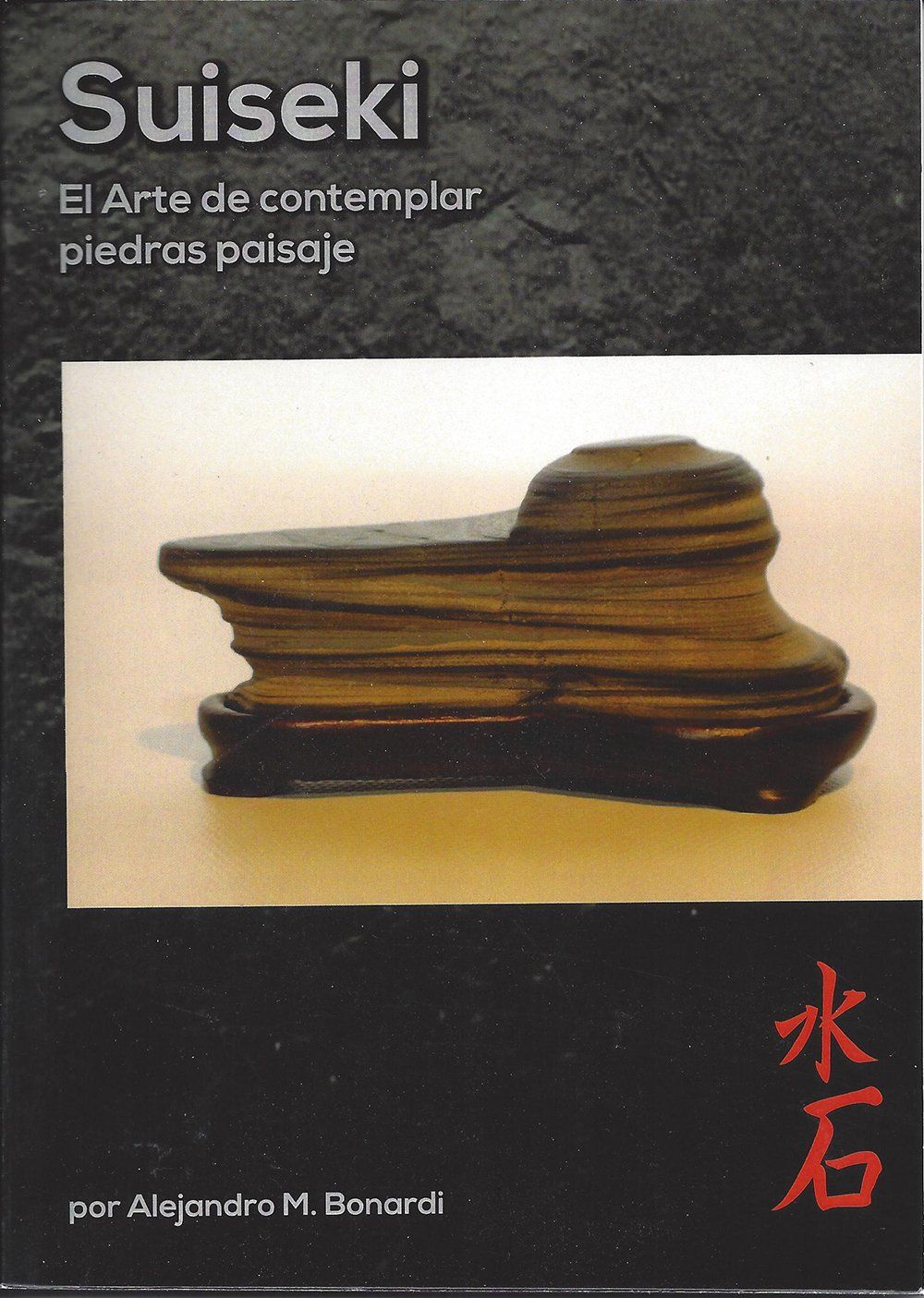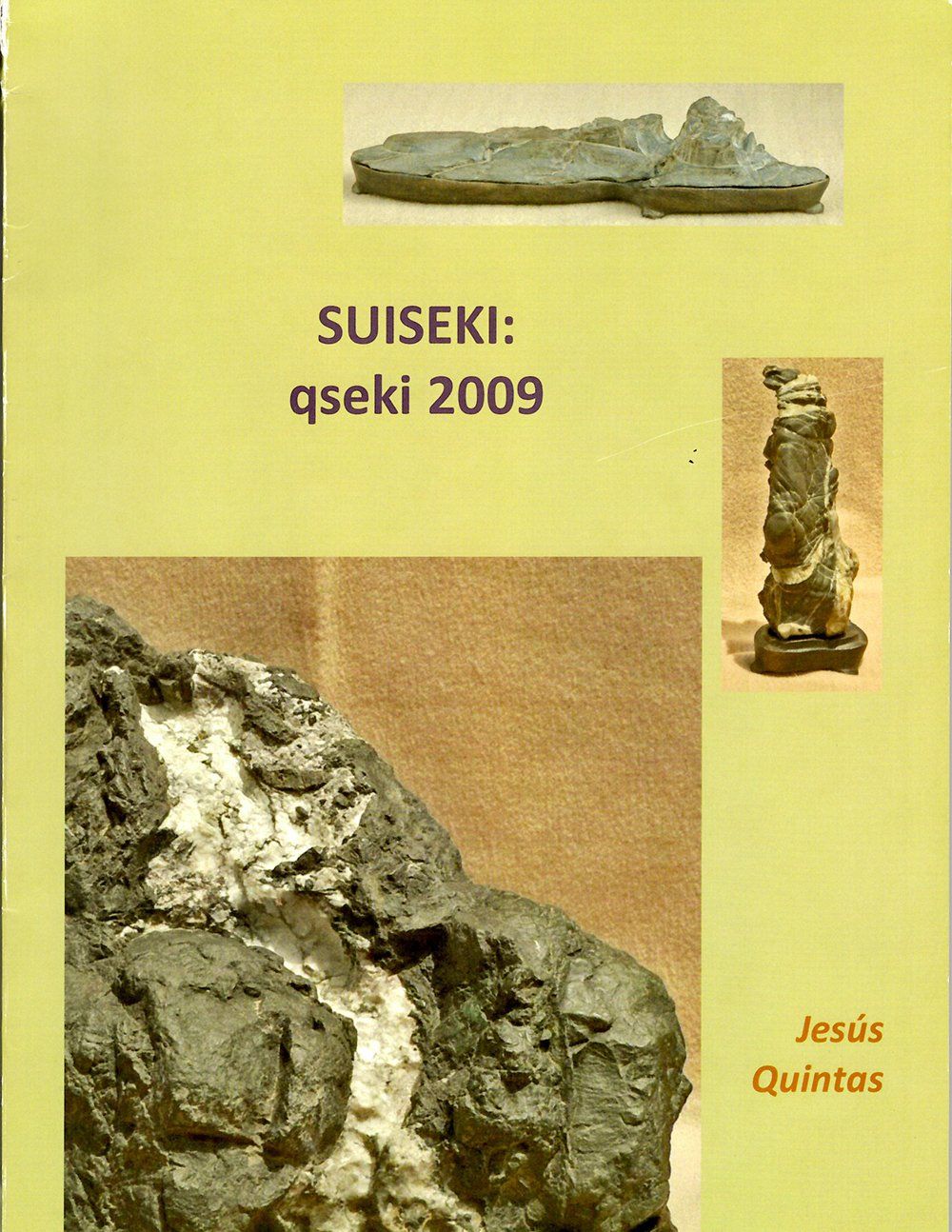SPANISH BOOK REVIEWS
Jesủs Quintas Bermủdez, Josẻ Antonio de Frutes Martin, and Antonio Rojo Fajardo, eds. 2023.
Suseki: Arte e la Naturuleza
146 pages, softcover, privately published by editors. No ISBN.
An exceptional exhibition of viewing stones from 10 countries was held in Valladolid, a municipality North of Madrid, Spain, on March 4-5, 2023. This display of 100 stones, half from Spain, was organized and staged by the three editors of the limited-edition catalog that documented this major exhibition. The type of stones displayed and this catalog was strongly influenced by the Japanese tradition of Suiseki. The format of this volume is based on the books published to document the annual Japan Suiseki Exhibition held at the Tokyo Metropolitan Art Museum.
Twenty exhibitors participated in this event featuring stones collected in Spain. Thirty-three stones were included from neighboring Italy, three from Switzerland, and two from France. One of the great features of this exhibit is that only five stones were from non-European countries. Another feature that contributed to this fine exhibition is the quality of the rocks and how they were displayed. While most daiza used in the show was influenced by the Japanese tradition, it was good to see several contemporary and non-Japanese carved wood bases. The suiban were mostly ceramic or bronze trays, although it was refreshing to see two wood trays.
This book has excellent photographs of each display item. It is a high-quality publication that matches the corresponding high quality of the stones and how they were exhibited. I found the assignment of gender to the stones curious. Referring to the stones as “she” throughout the book is a significant departure from the Japanese tradition as gender assignment is not used in the Japanese language.
Rating: Excellent; an important and valuable publication documenting primarily quality European stones, especially ones from Spain.



